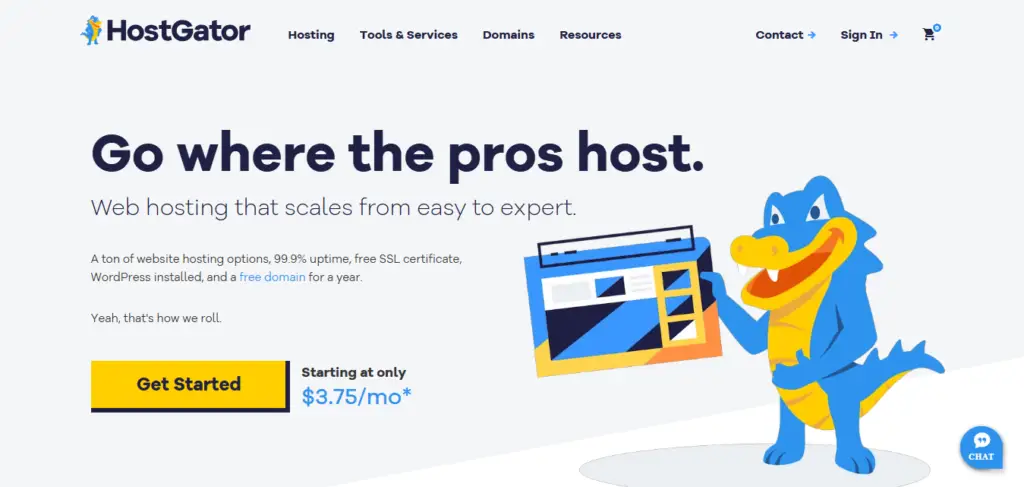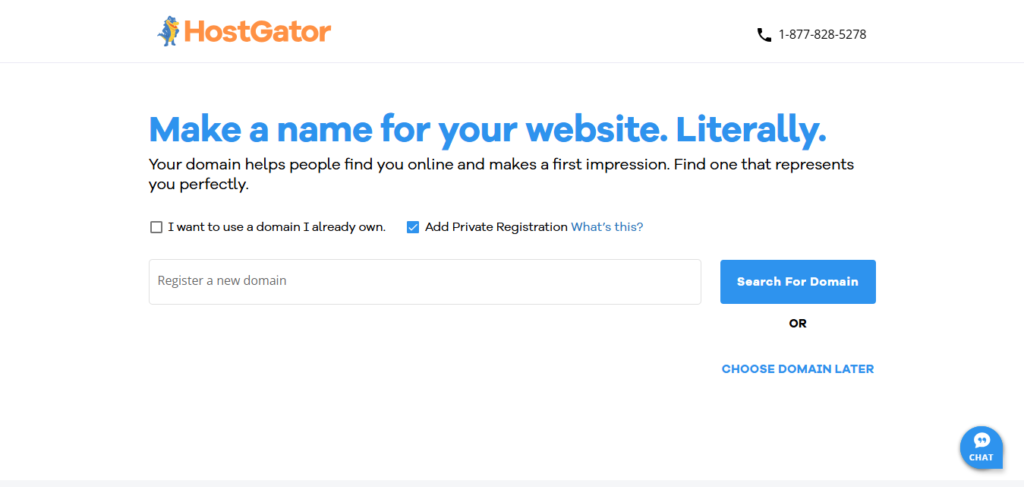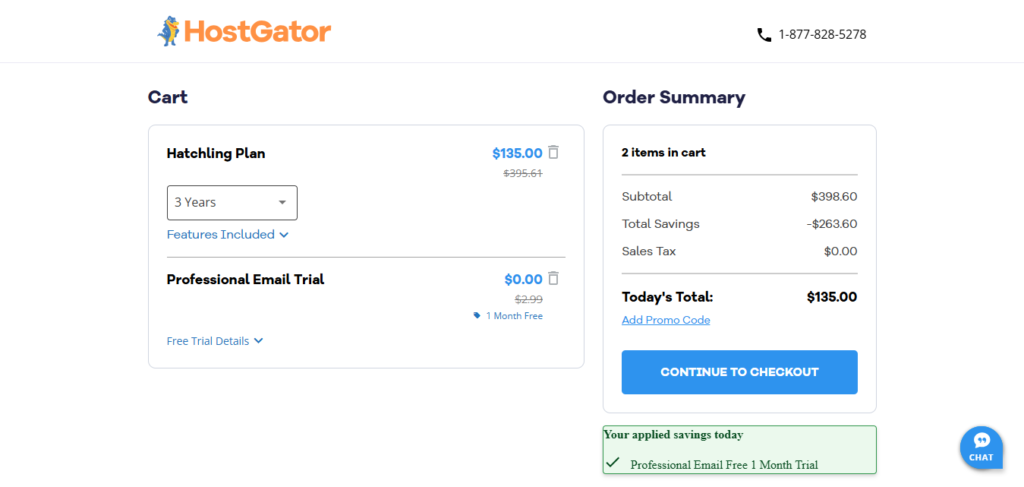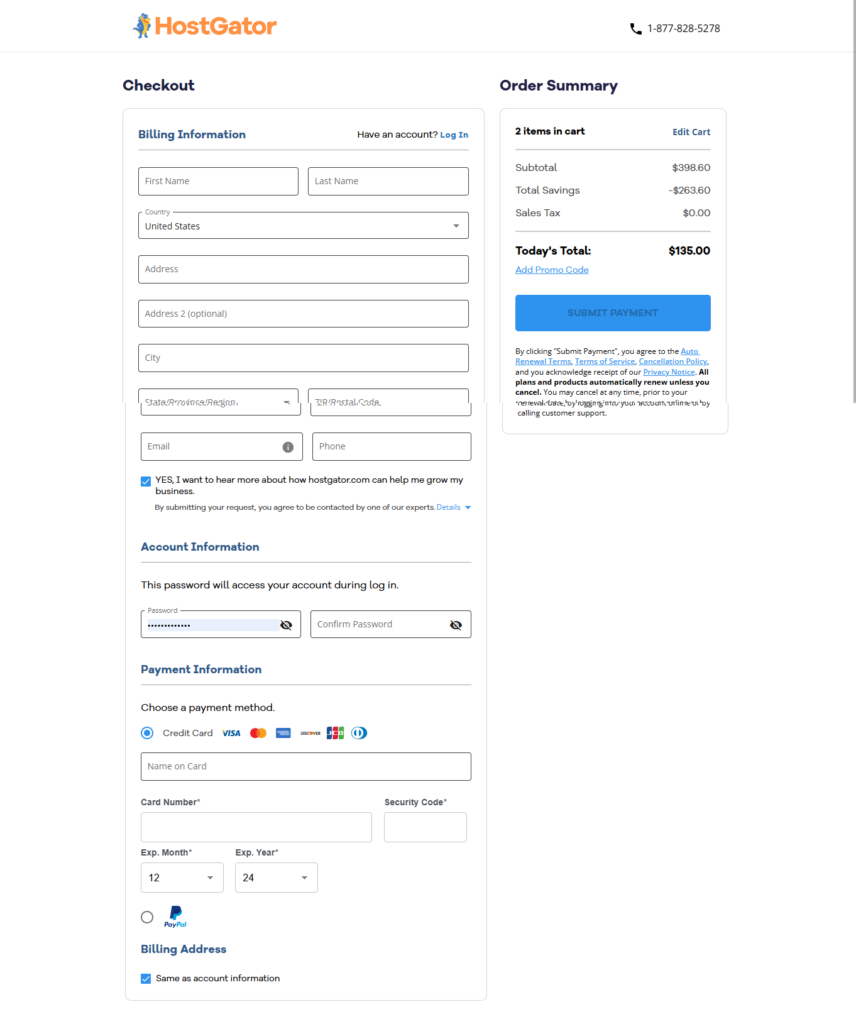
If you are interested in making money online starting a health blog is your opportunity to create a passive income stream while sharing your knowledge on healthy lifestyle, fitness, nutrition, and mental well-being. In many cases, this is better than a traditional job as a nurse or many medical-related jobs.
The best part is that you don’t need to be a certified expert in any medical field to start a money-making blog. Whether you’re a health enthusiast, fitness lover, or someone generally very interested in health-related affiars, all you need is a genuine interest in helping others and a bit of creativity to present your content in a unique and insightful way.
Every successful health blog begins with just one blog post. Yours could be the next one sharing content on how to live a healthier life.
Why You Should Start A Health & Wellness Blog Today:
- Minimal Time & Cost to Start: It only takes 10 minutes to set up, and you can launch your blog for as little as $3.5/month.
- Passive Income: You can make anywhere from $3,000 – $12,000+/month. This is still a better position compared to most medical-related jobs with far fewer restrictions.
- No Tech Skills or Coding Is Required: Don’t worry about coding! Use easy-to-use templates to customize your blog and make it uniquely yours.
- Monetize From Day One: You can earn money through ads and affiliate marketing right from the start. No need for a huge following to begin earning!
- Reach a Global Audience: Your blog can attract readers from all over the world, seeking advice on fitness, healthy living, and wellness.
- Paid Brand Partnerships: As your blog grows, health and wellness brands will begin to contact and pay you to promote their products and offerings on your blog.
- Work from Anywhere: Whether you’re at home, traveling, or anywhere in the world, your blog will be accessible whenever you need it.
Many successful wellness bloggers are making $12k+ each month. With patience and consistency, you can do the same and enjoy a steady stream of passive income.
So why wait? You literally can set up your blog in a few minutes and publish your first blog posts, monetize, and make money. As your traffic grows, your income will follow suit. The possibilities are endless!
Essential Requirement to Get You Started
Here are the things you need to set up a standard health & wellness blog and get it ready to start publishing your first blog post;
- A Desktop or Laptop: You’ll need one of these to manage your blog and write blog posts efficiently. It’s essential for editing content and handling any technical aspect of your blog.
- A Domain Name: This is the unique name of your blog with a .com extension, e.g., “amazon.com”. Pick something catchy, relevant to your niche, and easy to remember. It could be something related to wellness, fitness, or healthy living.
- A Blogging Platform (CMS): A Content Management System (CMS) allows you to create, manage, and publish your blog content. WordPress.org is highly recommended, as it’s beginner-friendly and doesn’t require any coding. Plus, it offers customizable themes to fit your blog’s style.
- Web Hosting: Your hosting service is where your website lives. It keeps your blog accessible to your readers at all times. Providers like HostGator ensure your site is online and stable.
Tip: When signing up with a hosting provider like HostGator, you’ll get easy access to use WordPress directly within your account. This means you can start building and managing your blog instantly with all the features WordPress has to offer.
Affiliate Disclosure: This post may include affiliate links with special discounts. Using them saves you money and supports our site at no extra cost to you. Win-win right! Check out our [Privacy Policy] for more details. Thanks for your support!
How To Start A Health & Wellness Blog Step-by-Step
Here’s a simple step-by-step guide to launching your health & wellness blog using HostGator (one of the top web hosting services available):
- Step 1: Start within a health & wellness sub-niche
- Step 2: Head over to HostGator to get started
- Step 3: Select your preferred HostGator hosting plan
- Step 4: Choose your unique domain name
- Step 5: Set Your Hosting Subscription Period
- Step 6: Create your HostGator account
- Step 7: Install WordPress within your HostGator Account
- Step 8: Within your WordPress, select your blog theme [A Pre-built Site]
- Step 9: Customize your main pages and start publishing blog posts.
Step 1: Start Within a Health-Related Sub-niche
Focusing on a specific sub-niche in the health & wellness space helps you build authority and connect with a more targeted audience. Start by picking one specific area to dive into, and as you grow, you can expand into other related topics for fresh content ideas.
Here are some popular health blogging sub-niches to consider :
- Healthy Eating and Nutrition: Recipes, meal plans, tips for healthy grocery shopping, and breakdowns of different dietary approaches (e.g., vegetarian, paleo).
- Mental Health: Address mental health-related topics such as stress management, anxiety, depression, mindfulness, and therapy. Content might include coping strategies, self-care tips, and mental health resources.
- Natural Health and Remedies: Information on alternative therapies, herbal remedies (with disclaimers to consult a doctor before use), and natural approaches to common ailments.
- Disease Prevention and Management: Tips for healthy habits that can reduce the risk of chronic diseases, information on specific conditions (with emphasis on consulting a doctor for diagnosis and treatment).
- Healthy Aging: Focus on issues related to aging, such as maintaining physical health, cognitive function, and managing age-related conditions. Topics may include exercise for seniors, anti-aging skincare, and longevity tips etc.
- Self-Care and Healthy Habits: Techniques for relaxation, getting enough sleep, establishing healthy boundaries, and prioritizing self-care routines.
- Healthy Living Inspiration: Personal stories about overcoming health challenges, success stories of healthy lifestyle changes, and articles promoting a positive and healthy outlook.
And much more – Here are some health & wellness blog post topic ideas in different sub-niches
Step 2: Click on “HostGator” To Get Started
Using our HostGator discount link, you can get HostGator for a lower price, plus a free domain name of your choice.

Relevant: You might also want to explore other trustworthy web hosting providers that can meet your specific needs.
Step 3: “Choose Your HostGator Hosting Plan”
Choosing the HostGator Hatchling plan is a smart move and a budget-friendly one, as it’s the most affordable plan. As a beginner, you don’t need an expensive plan till your blog starts receiving huge traffic and income; you can upgrade at any time.

Step 4: Pick a Unique Domain Name For Your Blog
Once you’ve selected your plan, you’ll be taken to a page like the one below, where you can choose your domain name and complete your sign-up process.

What to consider when choosing your health & wellness blog domain name;
- Make It Memorable and Easy to Spell – Choose a name that’s simple and easy for your audience to remember. Avoid using complicated spellings or unnecessary hyphens that might confuse visitors.
- Reflect Your Niche – Your domain name should clearly hint at your blog’s focus on health and wellness. Consider using keywords like “wellness,” “fitness,” “nutrition,” or “healthy” to give visitors an instant idea of what your blog is about.
- Keep It Short and Sweet – Opt for a domain name that’s between 6-14 characters. A short, snappy name is easier to recall and type in, making it more user-friendly.
- Easy to Read and Pronounce – Pick a name that’s easy to say and spell out loud. Avoid tricky letter combinations or words that could be mispronounced, as this could make it harder for people to share your site.
A well-chosen domain name is the first step toward building a memorable and successful health and wellness blog!
Relevant Post – Find More Than 200 Health-related Blog Name Ideas And Their Meaning.
Step 5: Adjust Your Hosting Subscription Period
Ensure you’re selecting the Hatchling Plan on the right-hand side. Then, adjust your subscription period to your preference, either 1 year or 36 months, based on what you can afford right now. Longer subscription periods often offer a better value, but the choice is yours!

Step 6: Create Your HostGator Account
To create your HostGator account, enter your email address and choose a strong password.

Before proceeding, make sure to review your order details carefully to ensure everything is correct. Once you’re confident, complete your checkout to finalize your purchase.
Step 7: Install WordPress on Your HostGator Account
Once your HostGator sign-up is complete, follow the on-screen instructions to install WordPress on your site.
Alternative Method:
- Log into your HostGator account.
- Find the “WordPress” section in your dashboard.
- Click on it, and you’ll be directed to set up your WordPress account.
- After signing up, you’ll be automatically logged into WordPress to begin customizing your blog and creating posts.
Now you’re all set to start designing your health and wellness blog.
Step 8: Choose Your Blog Theme in WordPress (Pre-built Site)
WordPress offers a variety of pre-built themes to help you get started quickly. These themes are website templates designed to make your blog look professional without the need for custom coding or starting your site design from scratch.
Here’s a simplified way to choose a suitable WordPress theme for your health & fitness blog;
Here’s how to choose and customize your theme:
- Navigate to Themes: In your WordPress dashboard, go to Appearance > Themes.
- Explore Theme Options: Browse through available themes, keeping in mind your niche—health and wellness. Look for themes that are clean, easy to navigate, and visually appealing to your target audience.
- Preview the Theme: Click the Preview button to see how the theme looks with your content and check how it appears on both desktop and mobile devices.
- Choose and Install: Once you find a theme you like, click Install to add it to your blog.
- Customize Your Theme: Go to Appearance > Customize to tweak colors, fonts, and layouts, ensuring it reflects your blog’s vibe and aligns with your health and wellness content.
Here are recommended themes for health-related blogs:
- Divi (Highly customizable, ideal for health content)
- Astra (Highly customizable, fast, and mobile-friendly)
- Wellness Pro (Perfect for health and wellness blogs with a professional design)
Choosing a theme that matches your health & wellness brand will make it easier for your audience to navigate your site, read your blog posts, and have a good experience!
Step 9: Customize Your Blog and Start Posting
- Personalize your blog! Use your theme’s customization options to tweak colors, fonts, and layouts to match your style.
- Most themes come with built-in templates for essential pages like “About,” “Contact,” and “Home.” You can easily adjust these to fit your vision.
- Once your pages are set up, it’s time to start writing and publishing posts.
Congrats! You’ve created a fully functional blog ready for any type of health-related blog post. Your blog is now live and visible on Google and the web.
Watch the video below to help make the process easier for you
This video will guide you through setting up your WordPress blog with HostGator.
Once you’ve completed your blog site, you can then follow the steps below to find health-related blog topic ideas to write about and monetize to make money.
How to Find Health Blog Topics to Write About
To build a successful health blog that attracts traffic and generates income, you need to create valuable content that resonates with your audience.
Here’s how to find the perfect blog topics for your health blog.
Finding Blog Topics to Write About
- Research Trending Health Topics – Use tools like Google Trends, health-related social media hashtags, or health forums to see what’s currently trending in the health and wellness space. Pay attention to new studies, popular diets, or emerging health concerns.
- Answer Common Health Questions – Focus on answering frequently asked questions, such as “What are the best tips for weight loss?” or “How to improve mental health?” These topics are timeless and highly searched.
- Look at your Competitor Blog Posts – Check out other successful health blogs to see which topics are performing well. Find areas where you can provide more value or a fresh perspective.
- Use Keyword Research Tools – Use keyword research tools like Ubersuggest or SEMrush to find out what your audience is searching for. Keywords like “healthy eating,” “mental health tips,” or “exercise routines” can guide your content creation.
- Engage with Your Audience – Ask your readers on social media or in your blog comments what health topics they want to learn more about. Engaging with your audience will find out the topics idea people are searching for.
By following these steps, you’ll easily uncover the topics that will resonate with your audience and help you build a successful, profitable health blog.
Relevant Post: Health Blog Topic Ideas You Can Write About
How to Write a Health-Related Blog Post
- Start with a Strong Introduction – Capture your reader’s attention right away by addressing a common health concern or interest. A compelling intro sets the tone and keeps readers engaged.
- Organize Your Content Clearly – Format your blog posts like a standard article. Use subheadings, bullet points, and short paragraphs to break up complex information. This makes your content easier to read and understand.
- Write in an Accessible and Approachable Tone – Avoid jargon and write in a friendly, conversational tone. Keep your message clear and relatable to help readers feel confident in the topic.
- Use Visuals to Enhance Your Message – Include images, charts, or infographics to make your content more engaging. Visuals help clarify complex concepts like exercises or healthy recipes.
- Conclude with a Call-to-Action (CTA) – End with an invitation to comment, share, or explore other posts. This encourages interaction and keeps readers engaged.
By following these steps, you’ll create health content that’s both informative and easy to digest, helping your audience stay connected and informed.
For More Details: How to Write an Amazing Blog Post Step-by-Step
How to Write an Attractive Headline For Your Blog Posts
- Make It eye-catching – Use numbers, strong adjectives, or questions that spark interest. For example, “10 Healthy Habits to Improve Your Life” or “How to Stay Fit Without a Gym Membership” will immediately grab attention.
- Make It Simple And Short – Keep your headlines within 60 characters. A shorter headline is more digestible and works better for search engine optimization (SEO).
- Include Your Posts Target Keywords for SEO – Incorporate relevant keywords like “fitness tips,” “healthy eating,” or “mental health.” This will help your content appear in search results.
- Create Curiosity or Promise Value – Titles like “How to Lose Weight Effectively in 30 Days” or “The Ultimate Guide to Stress Relief” promise actionable insights, which increase the chances of clicks.
Relevant Post: How to Write the Perfect Blog Headline
How to Hire a Good Blog Writer
If writing isn’t your strength or you need extra help, hiring a freelance writer can help maintain quality and consistency in your health blog.
- Find Experienced Writers: Look for freelance writers on platforms like Upwork, Fiverr, or ProBlogger who specialize in health or wellness writing. Experience in this niche ensures quality content.
- Be Clear About Your Needs: Clearly communicate the tone, style, and topics you want covered. A detailed brief helps ensure the writer’s work aligns with your vision.
- Request Writing Samples: Always ask for samples or a portfolio to assess if the writer’s style and expertise are a good fit for your health blog.
Relevant Post: How to Hire a Professional Health Blog Writer
By implementing these strategies, you’ll be able to create engaging blog posts that will resonate with your audience and grow your income as well.
How to Monetize Your Health Blog and Make Money
1. Monetize Your Blog With Display Ads
One of the most common methods to start making money from your health blog is to monetize it through display ads. Google AdSense is the most popular option for most beginners, but as your blog grows, you can explore other advertising networks that might suit your audience and niche. Advertisements offer an excellent way to earn passive income while you continue providing valuable health tips and insights.
How to Get Started with Ads:
Sign Up for Google AdSense:
- Visit Google AdSense and click on the “Sign Up” button.
- You’ll need a Google account, which is likely something you already have.
- Enter your blog’s URL and some basic information. Google will then review your site to ensure it complies with their content policies, a process that usually takes a few days.
- Pro Tip: Having at least 10 to 30 blog posts live before you apply can help expedite the approval process.
Add AdSense Code to Your Blog:
- Once approved, Google will provide you with a unique code to embed on your site. This code will automatically display ads that are relevant to your content and the interests of your readers.
- You can place the ads in various areas of your blog, such as the sidebar, header, or footer. Platforms like WordPress offer simple plugins to easily insert the code without requiring technical expertise.
Start Earning from Ads:
- After setting up, Google will begin showing ads on your health blog. You’ll earn revenue either when visitors click on the ads or view them (this is called Cost Per Thousand Impressions, or CPM).
- The beauty of ads is that once they’re in place, they create a passive income stream. You can focus on writing and growing your blog while the ads continue to generate income.
How Much Can You Make With Ads?
Your ad earnings will depend largely on the volume of traffic your blog receives. There are many health bloggers, making $1,000 to $3,000 or more per month just with Google AdSense alone. As your blog attracts more readers consistently your ad revenue will grow as well.
Relevant Post – Other Ad Networks To Monetize Your Blog
2. Monetize Your Blog With Affiliate Products
Promoting affiliate products is one of the most effective ways to make money from your blog, promoting health-related products or services you know about. This could include fitness equipment, supplements, health apps, or even wellness retreats. You will earn a commission whenever your readers click on your unique affiliate link and make a purchase.
How to Get Started?
Find Health-related Affiliate Programs:
- Search for affiliate programs that align with your health niche. Here are a few great options:
- Amazon Associates: For fitness equipment, health books, supplements, wellness gadgets, and more.
- iHerb: A popular affiliate program for health supplements, vitamins, and natural products.
- ShareASale: Offers several health-related brands for promoting products like healthy snacks, fitness tools, and wellness services.
- MindBodyGreen: This program offers a range of wellness products and services that would be perfect for a health blog.
- Bluehost: If you talk about blogging or health-related businesses, promoting web hosting services like Bluehost through their affiliate program is a great way to earn.
Find More: Health Affiliate Programs
Sign Up For Those Affiliate Programs:
- Once you find a program that fits your health niche, sign up for the program. You’ll need to provide some details about your blog, including its focus and audience.
Get Your Affiliate Links:
- After getting approved, you’ll receive unique affiliate links to use in your content. These links track both clicks and sales made through them, so when your visitors or readers click on them and make a purchase, you will get paid a commission.
Integrate Your Affiliate Links Into Your Content:
- For affiliate marketing to be successful, it’s crucial to integrate affiliate links naturally within your content. Here are some ideas to help:
- Product Reviews: Share your experience with health-related products or services (like supplements, fitness equipment, or health gadgets) and embed your affiliate links.
- “Best of” Lists: Create posts like “Top 10 Supplements for a Healthier You” or “The Best Fitness Gear for Your Home Workout” and include affiliate links to those products.
- How-to Guides: If you have a blog post about how to maintain a healthy diet or a post about workout routines, you can link to relevant products, apps, or services using affiliate links.
Find More: Affiliate Blog Topics to Write About
How Much Can You Make With Affiliates?
- Your earnings from affiliate marketing will vary based on the products you promote and the commission rates they offer, which typically range from 5% to 40% per sale on both physical and digital products and services. Health bloggers who excel in this space can make anywhere from $1,000 to $12,000+ monthly, depending on the traffic they attract and the products they feature.
Final Thoughts on Monetization
Monetizing a health blog is completely achievable with a combination of ads and affiliate marketing. These two methods provide an excellent opportunity to earn money while helping your readers live healthier lives.
Start by setting up Google AdSense to display ads, and then dive into affiliate marketing by promoting products or services that align with your blog’s niche. As your audience grows, so will your income potential. Just keep creating valuable, engaging content, and watch the earnings roll in!
Pro Tip: Combine multiple methods for steady cash flow. For example:
“Use affiliate links to promote supplements, then upsell readers to your custom meal plan.”
Ready to dive deeper? Check out our Complete Guide to Health Blog Monetization for niche-specific tactics!
Relevant Resource – Other Methods You Can Utilize To Make Money From Your Blog
How Much Money Do Health & Wellness Blogs Make?
Here’s how much health & wellness blogs make, in different categories.
These are estimates and average required numbers.
- Average time required
- Average required traffic
- Average monthly income
- Common methods of monetization
- Average published number of posts
[a]. Beginner Health & Wellness Blogs
- Income: $500 – $1,500 per month
- Traffic: 2,6000 – 8,000 visitors per month
- Number of Posts: 25 – 60 posts
- Time required: 6 months – 1 year
- Common Methods of Monetization:
- Display ads (Google AdSense)
- Affiliate marketing (wellness products, supplements, fitness gear)
Beginners focus on building content and slowly monetizing through affiliate links and ads.
[b]. Average Health & Wellness Blogs
- Income: $3,400 – $11,500 per month
- Traffic: 15,000 – 75,000 visitors per month
- Number of Posts: 80 – 500 posts
- Average required time: 1 – 2 years
- Common Methods of Monetization:
- Affiliate marketing (wellness products, vitamins, fitness programs)
- Display ads (via networks like Mediavine or AdThrive)
- Sponsorship deals with health niche-related brands
By this stage, the blog may have built authority, increasing affiliate commissions and ad earnings.
[c]. Established Health & Wellness Blogs
- Income: $15,000 – $100,000+ per month
- Traffic: 100,000 – 500,000+ visitors per month
- Number of Posts: 1,500+ posts
- Average required time: 3 – 5+ years
- Common Methods of Monetization:
- High-ticket affiliate marketing (health equipment, premium supplements)
- Selling online courses (yoga, meditation, fitness, nutrition)
- Premium ad display networks (Ezoic, Mediavine, AdThrive) or direct ad sales to brands
- Sponsored partnerships with large health companies
- Coaching or consulting
Established blogs attract high traffic, sponsorship deals, and even launch their own products like fitness gear or health apps.
Relevant Post – Health Blog Income Reports To Inspire Your Journey
Examples of Successful Health & Wellness Blogs
Here are some examples of health & wellness blogs to inspire you.
[1]. The Balanced Life
Overview: The Balanced Life by Robin Long specializes in Pilates workouts and fitness advice. It provides workout videos, healthy living tips, and encourages a balanced approach to health through its membership-based programs and classes.
Blog’s Insights
- Estimated Monthly Income: $30,000 – $50,000+
- Monthly Traffic: 400,000+ visitors
- Number of Published Posts: 500+
- Monetization Methods:
- Membership programs (Pilates classes)
- Online courses
- Affiliate marketing (fitness products)
- Sponsored content
[2]. Fit Bottomed Girls
Overview: Fit Bottomed Girls is a fun and relatable blog that promotes body positivity and fitness. It covers workout routines, healthy recipes, and wellness advice while encouraging women to embrace fitness without focusing solely on weight loss.
Blog’s Insights
- Monthly Income: $20,000 – $40,000+
- Monthly Traffic: 1,000,000 visitors
- Number of Published Posts: 3,6000+
- Common Methods of Monetization:
- Book sales
- Advertising
- Sponsored content
- Podcast sponsorships
- Affiliate marketing (fitness products)
[3]. Nerd Fitness
Overview: Nerd Fitness targets a niche of “nerds” or people who feel out of place in traditional fitness environments. It offers a fun and supportive approach to fitness, including workout plans, online coaching, and community support for fitness beginners.
Blog’s Insights
- Monthly Income: $45,000 – $80,000+
- Monthly Traffic: 1.5 million+ visitors
- Number of Published Posts: 1,300+
Methods of Monetization:
- Sponsored posts
- E-books and courses
- Affiliate marketing (fitness gear)
- Online coaching and fitness programs
[4]. Wellness Mama
Overview: Wellness Mama, run by Katie Wells, focuses on natural living, family health, and wellness solutions. It features DIY recipes, natural remedies, and parenting tips, positioning itself as a trusted resource for health-conscious families.
Blog’s Insights
- Monthly Income: $70,000 – $150,000+
- Monthly Traffic: 4,000,000+ visitors
- Published Posts: 1,700+
- Common methods of Monetization:
- Online courses
- Sponsored posts
- Podcast sponsorships
- Affiliate marketing (health products)
- E-commerce (Wellness Mama products)
How to Drive Traffic to Your Health Blog
Attracting traffic to your health blog involves producing valuable content and promoting it effectively.
Here’s a strategic approach to boost your blog’s visibility:
1. Optimize for SEO to Increase Traffic
- Keyword Research: Use tools like Google Keyword Planner or Ubersuggest to identify trending keywords in the health niche. Focus on search terms such as “healthy eating tips,” “fitness routines,” or “mental wellness strategies.”
- On-Page SEO: Incorporate keywords naturally into your titles, meta descriptions, headers, and image alt texts. This helps search engines understand your content and increases your chances of ranking higher.
- Content Structure: Organize your blog content with clear headings (H1, H2, H3) to improve readability and SEO performance. A well-structured post is easier for both readers and search engines to navigate.
- Backlinks: Build backlinks by collaborating with fellow health bloggers or contributing guest posts to authoritative sites. Quality backlinks improve your site’s credibility and search engine ranking.
Relevant Post – How to Build Backlinks to Grow Your Site
2. Promoting Your Health Blog with Pinterest
- Create Eye-Catching Pins: Pinterest thrives on visuals, so make your pins attractive and compelling. Use high-quality images and add text overlays that grab attention. Link your pins directly to your blog posts to drive traffic.
- Pinterest SEO: Optimize your pin descriptions and titles with relevant keywords. Follow trending topics in health and wellness, and tailor your pins to match those trends. This increases the likelihood of your pins being shared.
- Be Consistent: To keep your content visible, pin regularly. The more often you post, the higher the chance of your pins reaching a larger audience.
3. Leveraging Quora for Traffic
- Answer Health-Related Questions: Search for questions on Quora like “What are some healthy meal ideas?” or “How can I improve my fitness?” Provide detailed, helpful answers and link back to your blog when relevant.
- Build Your Authority: By consistently answering health-related questions, you’ll establish yourself as a trusted authority in the health niche, which will drive more traffic to your blog.
4. Engaging on Reddit
- Join Health Subreddits: Participate in health-related subreddits like r/health, r/Fitness, or r/nutrition. Share valuable insights and link to your blog when your contribution adds value to the discussion.
- Host an AMA (Ask Me Anything): If you specialize in a specific area of health, consider hosting an AMA on Reddit. Share your blog posts during the AMA to provide deeper insights into your expertise.
- Be Helpful, Not Spammy: Reddit communities value helpfulness over self-promotion. Contribute thoughtfully to discussions and only link to your blog when it genuinely enhances the conversation.
5. Participating in Facebook Groups
- Join Health-Focused Facebook Groups: Find active groups centered around health, fitness, and wellness. Share your blog posts when relevant, and offer helpful tips based on the content you’ve created.
- Engage with the Community: Stay active by answering questions and offering valuable advice. When you’re engaged with the community, sharing your blog posts will feel more natural and less promotional.
- Run Facebook Ads: If you have a budget, Facebook Ads can be an effective way to promote your top-performing posts to a broader audience. Be sure to target the right demographics for maximum reach.
By focusing on SEO, Pinterest, Quora, Reddit, and Facebook groups, you’ll be able to drive traffic to your health blog and build an engaged audience. Stay consistent and continue providing value to see your traffic grow.
Relevant Posts:
- How to Boost Your Blog Traffic as a Beginner
- Grow Your Audience: The Ultimate Guide to Blog Promotion
Simplified Summary
Now that you’re ready to launch your health and wellness blog, it’s time to choose your niche!
- Select a specific focus (such as fitness, healthy eating, mental health, or holistic wellness) to establish your authority. As your blog grows, you can expand into other wellness topics.
- While you can monetize your blog with ads and affiliate links, it’s best to wait until you’ve built steady traffic. Focus on delivering valuable content first, and the income will follow.
- Once you’ve published a few posts and have some traffic, you can start adding Google AdSense ads and joining affiliate programs to earn commissions.
Here’s a quick recap to get you started:
- Pick a health and wellness sub-niche (e.g., fitness, nutrition, mental health).
- Click on HostGator to get started with your blog.
- Choose a hosting plan that fits your needs.
- Select a domain name reflecting your wellness niche.
- Adjust the hosting subscription period to your needs.
- Create your HostGator account and continue.
- Install WordPress through your HostGator account.
- Choose a theme that is clean and ideal for health-related content.
- Customize your main pages and start publishing your blog posts.
As you continue sharing valuable health tips and wellness advice, both your blog’s traffic and income potential will grow!
Other Types of Blogs You May Consider Starting
If you’re enjoying health blogging, you might love these other profitable niches:
Health & Wellness Adjacent Niches
- How to Start a Fitness Blog (Monetize workout plans and supplement reviews)
- How to Start a Beauty/Makeup/Skincare Blog (Perfect for holistic wellness bloggers)
- How to Start a Food/Recipe/Baking Blog (Healthy eating and nutrition focus)
- How to Start an Outdoor Blog (Hiking, nature therapy, and adventure wellness)
Lifestyle & Personal Growth
- How to Start a Lifestyle/Personal Blog (Broaden to self-improvement topics)
- How to Start a Mom/Parenting Blog (Family health and child wellness angle)
- How to Start a Coaching Blog (Monetize your health expertise 1-on-1)
Creative & Passion-Based Blogs
- How to Start a DIY [Craft & Home DIY] Blog (Wellness through creative projects)
- How to Start a Photography Blog (Health transformation photos, food photography)
- How to Start a Literature [Book & Poetry] Blog (Mental health through writing)
Special Interest Niches
- How to Start a Travel Blog (Wellness retreats and healthy travel tips)
- How to Start a Fashion Blog (Athleisure and body-positive style content)
- How to Start a Wedding Blog (Bridal wellness and pre-wedding health plans)
Pro Tip: Many of these use similar monetization methods to health blogs – ads, affiliates, and digital products work across niches!



